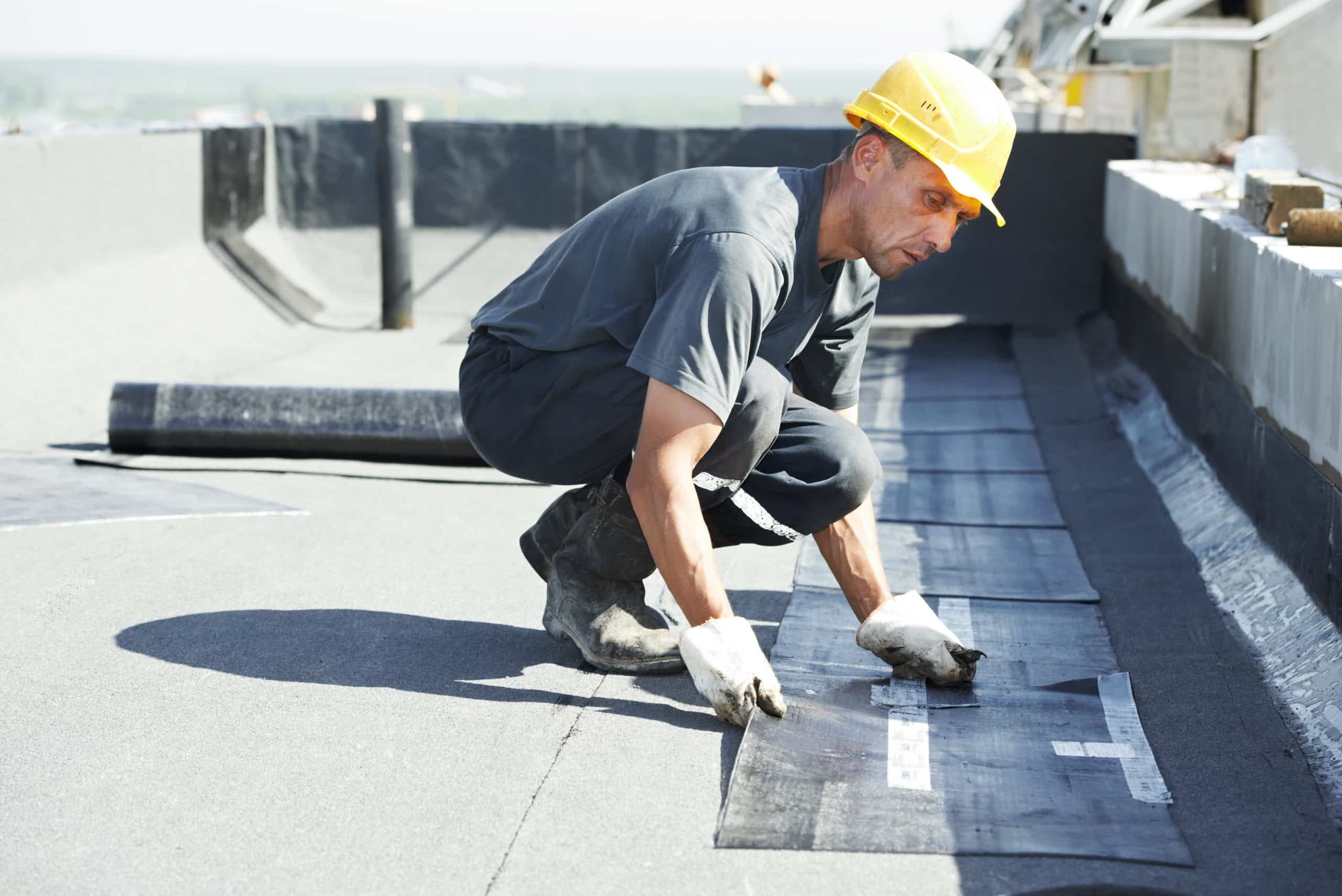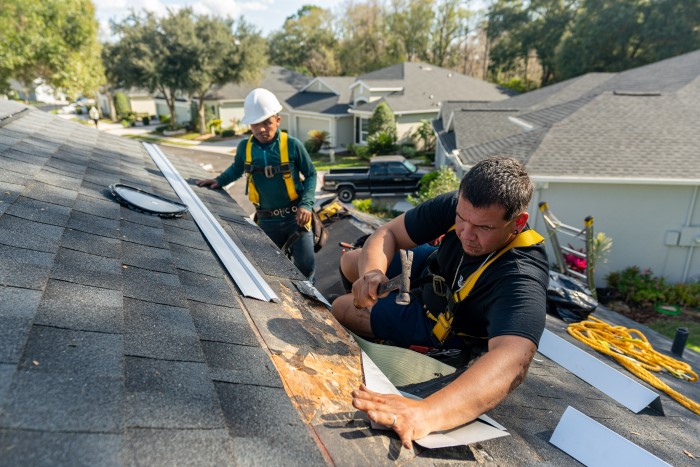Roofing Companies Oahu: Premier Roofers for All Roofing Projects
Roofing Companies Oahu: Premier Roofers for All Roofing Projects
Blog Article
Comprehending the Various Types of Roof Coverings: A Comprehensive Guide for Homeowners
With a variety of options-- varying from the traditional gable to the contemporary flat-- each kind provides unique advantages and obstacles that ought to line up with the house owner's environmental factors to consider and details demands. As we check out the complexities of numerous roof covering types, it ends up being noticeable that one dimension does not fit all; the best option might surprise you.
Saddleback Roof
Gable roofs, characterized by their triangular shape, are amongst the most prominent roof styles because of their simpleness and performance in losing water and snow. This style includes two sloping sides that satisfy at a ridge, enabling for effective water drainage and lessening the danger of water build-up. The high pitch frequently connected with gable roofing systems enhances their ability to handle hefty precipitation, making them suitable for different environments.
In enhancement to their useful benefits, saddleback roofs supply aesthetic convenience. They can be adjusted to various architectural styles, from traditional to modern-day homes. The style can additionally accommodate additional functions such as dormer home windows, which improve all-natural light and ventilation in the attic room space.
In addition, saddleback roofs supply sufficient room for insulation, contributing to energy efficiency. Homeowners can pick from a variety of roof covering materials, consisting of asphalt tiles, metal, and tiles, even more boosting customization options.
Despite their benefits, saddleback roofs might call for added support in locations vulnerable to high winds or hefty snowfall. Generally, the saddleback roof continues to be a favored selection as a result of its blend of performance, toughness, and aesthetic allure.
Apartment Roofs
Flat roofings are frequently recognized for their minimalist design and functional applications, particularly in business and industrial setups (oahu roofing). These roofing systems feature a nearly straight or horizontal surface, which permits very easy building and versatile area utilization. While they might lack the visual charm of angled roofs, flat roof coverings offer countless benefits, especially in metropolitan environments where making the most of area is vital
Among the primary advantages of level roofings is their accessibility. Property owners can use the roof area for various functions, such as rooftop yards, balconies, or photovoltaic panel installations. Furthermore, flat roofing systems are generally more economical to maintain and set up compared to their sloped counterparts, as they call for fewer products and labor.
Usual materials used for flat roofs include built-up roof (BUR), customized bitumen, and single-ply membranes, each offering distinct benefits. On the whole, level roofing systems offer as a versatile and useful option for lots of homeowners and organizations alike.
Hip Roofs
Hip roofings are characterized by their sloped sides that converge at the top, forming a ridge. This design is unique from saddleback roofs, as all four sides of a hip roof slope downwards toward the walls, providing an extra steady framework. The angle of the inclines can vary, permitting for convenience in architectural visual appeals and functionality.
Among the key benefits of hip roof coverings is their ability to endure hefty winds and adverse weather. The sloped surface areas allow far better water drainage, lowering the risk of leaks and water damage. Furthermore, hip roof coverings supply raised attic room room, which can be used for storage and even exchanged comfortable locations.
However, constructing a hip roof covering can be more complex and pricey than less complex roofing system kinds, such as saddleback roofs. The additional product and labor associated with producing the slopes and guaranteeing proper structural stability can cause higher expenses. Despite these drawbacks, numerous home owners favor hip roofing systems for their toughness, aesthetic charm, and possibility for energy performance.
Mansard Roofing Systems
Mansard roofings, usually acknowledged by their special four-sided layout, attribute two slopes on each side, with the lower incline being steeper than the upper. This architectural style, stemming from France in the 17th century, is not only visually enticing however useful, as it makes the most of the usable room in the upper floors of a building. The high lower incline permits for even more clearance, making it an optimal choice for lofts or attics, which can be exchanged living areas.
Mansard roofings are defined by their flexibility, fitting various building styles, from conventional to modern. They can be built with various materials, including asphalt tiles, slate, or metal, offering house owners with a range of choices to fit their preferences and budgets. Additionally, the design enables the assimilation of dormer windows, improving all-natural light and air flow in the upper degrees.
Nevertheless, it is important to think about the prospective downsides. Mansard roof coverings might require more upkeep because of the complexity of their style, and their high inclines can be testing for snow and view publisher site rainfall runoff. In general, mansard roof coverings integrate sophistication with practicality, making them a prominent option among home owners looking for distinctive building features.
Shed Roofing Systems
As property owners progressively look for simpleness and functionality in their architectural designs, dropped roofs have actually become a popular option. Identified by a single sloping aircraft, a shed roofing offers a minimal visual that enhances various home styles, from my company contemporary to rustic.
One of the primary benefits of a shed roofing is its uncomplicated construction, which usually equates to decrease labor and material prices. This style enables reliable water drain, reducing the danger of leaks and water damage. In addition, the vertical incline offers sufficient space for skylights, improving all-natural light within the inside.
Shed roof coverings also provide versatility in regards to usage. They can be successfully incorporated right into enhancements, garages, or outdoor structures like sheds and pavilions. Additionally, this roofing design can suit various roofing products, consisting of metal, asphalt tiles, and even green roofs, aligning with environment-friendly initiatives.
However, it is vital to take into consideration regional climate problems, as hefty snow lots might necessitate modifications to the roofing's angle or framework. Generally, dropped roofing systems offer a practical and visually pleasing choice for home owners seeking to make best use of functionality without endangering design.
Final Thought


Gable roofings, identified by their triangular shape, are amongst the most preferred roof designs due to their simplicity and go right here performance in losing water and snow. oahu roofing. The steep pitch commonly associated with gable roofings boosts their ability to deal with hefty precipitation, making them suitable for various climates
While they may do not have the aesthetic charm of pitched roofings, flat roofings supply many benefits, especially in urban environments where maximizing area is vital.

Report this page